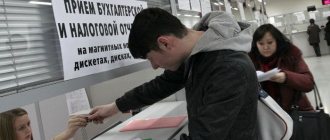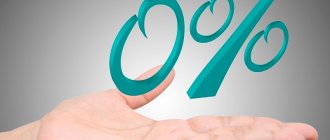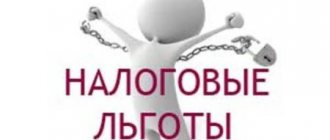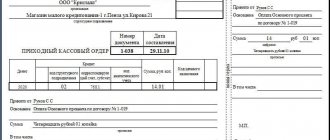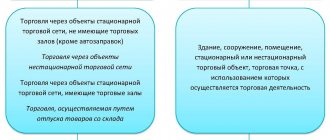What are special modes
Having registered with the Federal Tax Service as an LLC or individual entrepreneur, the taxpayer by default applies the general taxation system (OSNO).
This system has the highest tax burden and a large list of reporting. Small businesses with certain types of activities are allowed to apply special regimes that reduce the tax burden on small businesses and provide for less reporting. The possibility of establishing special regimes is provided for in clause 7 of Art. 12 of the Tax Code of the Russian Federation. It also defines the main approaches to the rules of their application:
- The transition to special tax regimes is based on the voluntary decision of the taxpayer.
- The fundamental points of each of them are regulated by the Tax Code of the Russian Federation.
- Each special regime may have its own taxes that are not provided for in the main list of federal taxes in force in the Russian Federation.
- In relation to each regime, the role of the subject of the Russian Federation in which the special regime is introduced is great. The subject can influence the conditions and limits of application of the regime, the specifics of determining the base and the amount of special tax rates, and establish an additional system of benefits. At the same time, those payments that are not associated with the special regime must continue to be paid according to the rules established by the Tax Code of the Russian Federation.
Why are special tax regimes needed?
To support and stimulate business development in the tax system of the Russian Federation, in addition to the general taxation system, there are also five special ones.
Special regimes are most common in small and medium-sized enterprises, as they can significantly simplify the system of paying taxes and submitting reports, as well as save on payments.
The principles of taxation that operate in Russia comply as fully as possible with generally accepted international standards and are developed on their basis.
What modes are special?
There have been changes to the list of special tax regimes in 2021: Chapter 26.3 of the Tax Code of the Russian Federation, which regulated the procedure for applying UTII, has become invalid. This means that from 2021 the special regime in the form of a single tax on imputed income cannot be applied.
So the special regimes in the Russian Federation are:
- for agricultural producers (UES);
- simplified (USN);
- production sharing agreements (PSAs);
- patent (PSN).
Despite the fact that since the beginning of 2015, each of these systems has been affected by a number of innovations introduced into the Tax Code of the Russian Federation, their fundamental provisions remain the same. The main change in relation to special tax regimes was the introduction of the obligation to pay property tax on objects whose value is determined as cadastral.
The characteristics and conditions for using special modes are different. Therefore, when choosing, you should take into account a number of conditions: what types of activities the regime is intended for, what taxes it exempts from compared to the general taxation system, what restrictions are set for transition and application, how many times a year you need to submit reports, etc.. As an individual entrepreneur assess all these factors and choose the right special mode, ConsultantPlus experts explained in detail. If you don't already have access to the legal system, get a temporary demo access for free.
What is the simplified tax system - the nuances of using the special regime
The most popular special mode is simplified.
The simplified tax system is a simplified taxation system that has 2 methods for calculating tax:
- “Income” - the tax rate is 6% of the amount of funds received at the cash desk or to the current account;
- “Income minus expenses” - the tax rate is 15% of the difference between income and expenses that are received (paid) and documented.
The minimum tax amount under the simplified tax system “Income minus expenses” is 1% of the amount of income, in the case when the amount of tax calculated in the general case is less than the minimum indicator.
The simplified tax system has the right to apply LLCs and individual entrepreneurs that meet the following conditions:
The following taxes are not paid under the simplified tax system:
- VAT, with the exception of imports or situations where the simplifier acts as a tax agent for VAT.
- income tax (for LLC);
- Personal income tax (for individual entrepreneurs), except for cases where the individual entrepreneur is an employer;
- tax on property of organizations, with the exception of tax calculated on the basis of the cadastral value of real estate.
The tax is paid in advance - until the 25th day of the quarter following the reporting one. The declaration is submitted once a year until March 31.
General features of special tax regimes
Existing types of special tax regimes, with a large number of fundamental differences among themselves, also have a number of common features. At the same time, they are divided into the following groups in relation to:
- Regarding the scale of activities of persons applying these regimes: Unified Agricultural Tax, Simplified Taxation System, PSN are intended for small enterprises, and PSA can only be used by full-fledged taxpayers.
- To the circle of taxpayers. Unified agricultural tax and simplified tax system are available to both organizations and individual entrepreneurs. PSA can only be used by organizations, and PSN can only be used by individual entrepreneurs.
ATTENTION! Officials plan to allow small businesses included in the SME register to use PSN. In addition, the bill considers the possibility of increasing the amount of income and the number of employees. For details, see this material.
ConsultantPlus experts spoke in more detail about the conditions for using PSN. If you do not have access to the K+ system, get a trial online access for free.
- Object of application. Unified agricultural tax, PSA and PSN are possible only for certain types of activities, and simplified taxation for the majority (with some exceptions).
- A set of taxes, instead of which a special tax is charged. With the Unified Agricultural Tax, the simplified tax system and the PSN, it replaces the income tax (for individual entrepreneurs - personal income tax), property (except for the tax calculated from the cadastral value) and VAT. For PSA there is no special tax as such, but a system of benefits for most existing taxes is applied, allowing for the complete abolition of some of them.
- Compatibility with each other and OSNO. The PSA is not compatible with any of the modes. OSNO, Unified Agricultural Tax and simplified taxation system cannot be combined with each other, but can be used together with PSN.
Read more about the possibility of combining modes in the article “What are the features of combining OSNO and simplified taxation system?”.
Characteristics and comparative analysis of types of special modes
The Tax Code of the Russian Federation has five special regimes that payers can use if they have grounds for doing so. Each of the systems has both its advantages and disadvantages, so we will conduct a comparative analysis of each of the popular types.
Taxation system for agricultural producers
This tax regime is available only to those enterprises and individual entrepreneurs whose activities are related to agriculture. Moreover, income from this activity must cover at least 70% of the total total income received.
Activities that fall under the Unified Agricultural Tax:
- crop production;
- livestock farming;
- breeding and growing fish;
- forestry, etc.
To have the right to apply this tax system, entrepreneurs must produce such products, and not engage in their further sale or processing.
The transition to the Unified Agricultural Tax regime is carried out voluntarily and subject to the necessary conditions for this, by submitting a special application to the tax office.
This system is in many ways similar to the simplified tax system, with the only difference being that it is used for agricultural enterprises. The single tax replaces the profit tax for LLCs, and the income tax for individual entrepreneurs, and also for both of them – property tax and VAT (except for customs). At the same time, personal income tax will continue to be paid for its employees - both individual entrepreneurs and enterprises.
The tax rate is 6%, and the base is profit - income received minus all documented expenses. In this case, it is possible to reduce the amount of income by subtracting losses from previous periods.
Simplified taxation system
This system is available for both individual entrepreneurs and legal entities. To switch to it, you need to submit a special application to the tax office. This can be done only within three days after registration of a newly created economic entity or from October 1 to November 30.
For LLCs, the single tax replaces:
- income tax;
- property tax.
Individual entrepreneurs will not pay taxes such as:
- personal income tax;
- property tax.
Also, all taxpayers are exempt from paying VAT (except for customs). At the same time, the obligation to pay insurance contributions to the pension fund remains with both the LLC and the individual entrepreneur.
The single tax can be calculated in two ways:
- from the income received - in the amount of up to 15% (a specific figure may be established by regional legislative acts);
- from the profit received (income minus expenses) – 6% of the amount.
The simplified tax system is not available for all types of activities: banking, insurance, investment sectors, production of excisable goods and transactions with securities are not covered by this system. For individual entrepreneurs there is also a limit on the number of employees - there should not be more than 100. The list of restrictions for organizations is much wider:
- sales income for 9 months of last year should not exceed 45 million rubles;
- the value of the property cannot exceed 100 million rubles;
- there should be no branches or representative offices;
- the share in the authorized capital of legal entities cannot be more than a quarter.
If during the reporting period the value of property that was sold exceeds 60 million rubles, then both organizations and individual entrepreneurs will have to return to the general regime.
Unified tax on imputed income (UTII)
The use of the UTII regime is also available for both individual entrepreneurs and organizations, and since 2013 it has been a completely voluntary decision of the payer. Its essence is that the taxpayer pays one tax in the amount of 15% of the tax base instead of several different ones.
The peculiarity of the regime is that the tax base does not depend on the actual result of the activity.
The amount of income or profit does not matter, since the tax is paid on imputed income.
Imputed income is an amount of money that is set at a fixed value and is considered the average indicator of profitability of a particular type of activity.
UTII can be combined with other regimes, since this system is applied only to a legally established list of activities:
- transport transportation (both passengers and cargo), as well as servicing various types of vehicles;
- retail;
- catering industry;
- provision of veterinary services, etc.
Each region of the Russian Federation has its own list of specific types of activities that fall under this regime. There are also restrictions on the scale of operation of the enterprise, that is, according to such criteria as:
- number of personnel (no more than 100);
- share of other legal entities in the authorized capital (less than 25%);
- production area (depending on the type of activity).
Also, an LLC or individual entrepreneur should not be a large taxpayer. If all indicators remain unchanged, then the declaration is drawn up only once and then duplicated every three months.
With UTII it is not possible to submit zero declarations and not pay tax if there is no activity. The taxpayer is obliged to either make all contributions on time or switch to another tax regime.
Taxation system for the implementation of production sharing agreements
This regime is used to regulate the relations of the parties to a production sharing agreement and replaces part of the taxes required for payment. The parties to the agreement are:
- An investor is an entrepreneur who pays a certain amount of money to obtain the right to search for and extract minerals in the territory specified in the agreement.
- The state represented by the local executive body, which grants the investor the right to use the subsoil.
In accordance with the terms of this system, in the case of production of valuable products, it will be divided between the investor and the state. This division will replace part of the taxes and fees established by law. At the same time, he must pay taxes such as:
- VAT;
- insurance premiums;
- income tax;
- excise tax;
- state duty;
- mineral extraction tax;
- payments for the use of natural resources;
- land tax;
- payment for having a negative impact on the environment.
Almost all of these taxes will be reimbursed to the investor in the future. The division of manufactured products can be carried out using two options:
- 75% and 25% (between the investor and the state, respectively) – the basic option;
- 68% and 32%.
The profit before tax formula is everything you need to know about calculating the final result of a company’s activities.
The latter option is rarely used, only in exceptional cases, and may depend on the feasibility study of the project or the cost assessment of the subsoil.
Find out what a business plan consists of.
How to open a bookmaker's office?An example of a hookah bar business plan: read here.
Patent tax system
This tax regime is available only to individual entrepreneurs and is aimed at stimulating the development of small businesses. It can be used by individual entrepreneurs who are engaged in a limited list of activities, for example:
- provision of hairdressing services;
- shoe repair work;
- tailoring;
- cosmetic services;
- individual educational services (tutoring or course management);
- design services;
- furniture repair, etc.
An entrepreneur engaged in one of these types of activities may apply the patent system if the following conditions are met:
- it has no more than 15 employees;
- its revenue for the year is less than 64.02 million rubles.
The work is carried out on the basis of the received patent - it is valid for one year and only in the territory of the constituent entity of the Russian Federation where it was issued. The tax is set at 6% of potential income.
The latter value is prescribed in local regulations and can range from 100,000 rubles. up to 1 million rubles Also, depending on various factors, it can be adjusted using special coefficients.
At the end of the year or before the end of the patent's validity period, it must be renewed - without fulfilling this condition, the entrepreneur will not be able to further work on this system.
Also about special tax regimes, watch this video:
Differences in taxation under special regimes
Special tax regimes differ significantly in terms of the tax bases to which the special tax rate applies. The base can be:
- A variable depending on the actual volume of income (or other object of taxation under a PSA) - for the Unified Agricultural Tax, the simplified tax system, the PSA. At the same time, for the simplified tax system there are 2 bases with different rates: “income minus expenses” with a basic rate of 15% and “income” with a basic rate of 6%.
- Constant (provided that the initial parameters on which its value is set remain unchanged) regardless of the volume of revenue - for PSN.
A set of indicators characterizing the main features of taxation under each of the special regimes is given in Table 2.
Read more about the most commonly used systems in this material.
The concept of “special tax regime” according to the Tax Code of the Russian Federation
The concept of “Special tax regime” implies a special procedure for determining and collecting taxes, as well as exemption from their payment, subject to certain conditions.
The purpose of its introduction is to provide budding entrepreneurs with the opportunity to work in more favorable conditions.
What does the transition involve?
The criteria by which the possibility of switching to one of the special systems is determined may be:
- the type of activity the enterprise is engaged in;
- number of company employees;
- the amount of income received;
- type of ownership.
Requirements for financial statements: read here.
Beauty salon from scratch: business plan step by step.Business ideas: how a woman can start a business.
The use of special modes has the following positive aspects:
- many priority areas of entrepreneurship experience a lower tax burden;
- special tax payment conditions stimulate the development of small businesses;
- the level of shadow turnover decreases;
- in areas where special regimes are used, tax collection increases.
What all existing special tax regimes have in common is that they replace the many levies of the general system by introducing one single tax.
The specific rate, tax base and features of its calculation depend on the specific type of special regime.
Conditions for applying special tax regimes
What conditions exist and apply today for the most popular special tax regimes, we will consider below:
Unified agricultural tax
This is a single tax on agriculture. Here are special requirements for the income of the enterprise:
- The share of income from the sale of agricultural products should be no less than 70% of total revenue. At the same time, there are no limits in terms of revenue - they can be absolutely anything.
- If the company is engaged in fishing and production of fish, then the number of employees should be no more than 300 people.
simplified tax system
“Simplified” can be used subject to the following conditions:
- The company should not be a state-owned or budgetary institution, nor an insurer, pawnshop or investment fund.
- The authorized capital may contain no more than 25% participation of third-party organizations or enterprises.
- The company cannot engage in gambling or mining.
- The annual number of employees cannot exceed 100 people.
- For 9 months of the year preceding the year the simplified tax system was established, the enterprise’s income was not higher than 45 million. This figure is calculated taking into account VAT and inflation.
UTII
It can be used as an independent tax regime, or as an additional one, for example, in combination with the simplified tax system. To switch to UTII, a company does not need to limit itself in any way in terms of revenue, but it is worth adopting the following rules:
- If a company is engaged in sales in an area specially available for this purpose, then this area should not exceed 150 square meters.
- The number of employees of the enterprise for the current and last year cannot be more than 100 people.
- The types of activities for which UTII is applicable are clearly reflected in paragraph 2 of Article 346.26 of Article of the Tax Code of the Russian Federation.
When switching to a certain tax regime, it is necessary to take into account both federal and regional features of the transition. To clarify these features, you will need to contact your local Tax Service.
Patent tax system
The main tax regimes belonging to the category of special - simplified tax system, unified agricultural tax, as well as UTII - relatively recently, in 2012, were supplemented by a patent system for calculating fees to the budget. Payers of the corresponding tax can be individual entrepreneurs. Individual entrepreneurs who work independently or form a staff of hired employees not exceeding 15 people can take advantage of the preferences of this taxation system.
The patent system for calculating fees to the budget exempts the entrepreneur from paying:
- personal income tax;
- property tax for individuals (for those objects that are involved in commercial activities);
- VAT.
It is noteworthy that, together with the patent system, an entrepreneur can apply any other types of taxes. He can thus calculate payments to the budget for certain commercial activities based on the greatest benefit. The main thing is to keep correct records of relevant business transactions. Entrepreneurs in a wide range of industries can operate within the patent system. Among them:
- repair and tailoring of clothes, shoes;
- hairdressing services;
- organization of work of beauty salons;
- provision of services in dry cleaners and laundries;
- production and repair of haberdashery;
- issue of license plates, street signs;
- repair and maintenance of household appliances;
- furniture repair;
- photo studio services;
- car repair and maintenance;
- provision of transport services;
- renovation of apartments;
- installation, welding work;
- glazing of balconies;
- provision of tutoring services;
- care for children and citizens in need;
- organization of reception of secondary raw materials;
- veterinary services;
- provision of housing for rent;
- land plots;
- production of products related to samples of folk and artistic crafts;
- processing of vegetables and other agricultural products;
- production and repair of equipment;
- services in the agricultural sector;
- printing, bookbinding services;
- jewelry repair, catering (with some restrictions);
- retail trade (with some restrictions).
Accounting and reporting for UTII
UTII is one of those taxes that predetermine the need for businesses to keep fairly detailed records and also submit reports to the Federal Tax Service. Thus, single tax payers must record indicators relating to fees, which are calculated due to the enterprise having the status of a tax agent, as well as other payments provided for by the legislation of the Russian Federation. The UTII payer is obliged to comply with the established procedure for carrying out cash transactions. Another obligation established for payers is the provision of financial statements to the Federal Tax Service. Individual entrepreneurs are exempt from fulfilling this obligation.

